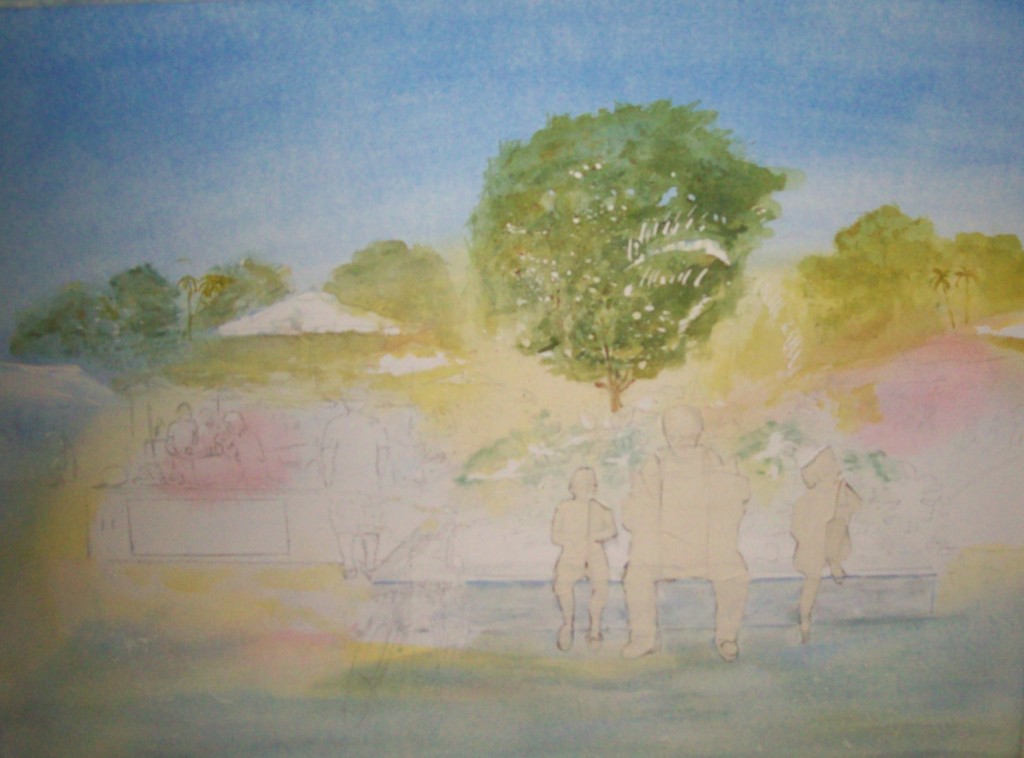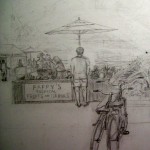
Whether you are outside and in front of your subject, or working from a photograph, it is worth quickly sketching the scene and observing the nuances in the subject, so the composition is visible in your mind before you begin a painting.
Tip#1: Train yourself to look for only the important aspects in a view. Your visual memory will work for you to complete the sketch.
Tip#2: Learn to work with speed to help develop the ability to recognize the important elements you wish to capture.
Tip#3: Look for what excites you.
Tip#4: Begin your sketch with the subject (main point of interest) and work outward.
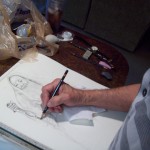
Tip#5: Constant comparison of the scene your sketching sharpens your observation abilities. Learn to compare everything; such as the height of a tree against a house, the warmest foliage against the coolest shades, etc.
Tip#6: Don’t be afraid to simplify and modify what you are seeing; id est, do you want to sketch the five trees you are actually seeing? or would three make the scene more artistically balanced?
Tip#7: Swiftly consider the compositional factors for a painting and sketch accordingly. You may wish to place an object in a different location to the focal point than what you are actually seeing.
Tip#8: Don’t fear if your “quick” sketch seems to be chicken scratches, have faith in your visual memory to work it to a better stage. See the example below:
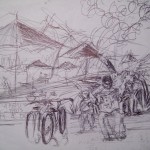
(Step 1) Original hen scratching ball point pen sketch of a street scene in Miami where there were several vendors selling tropical fruits, drinks, flowers, and plants. There were also tented restaurants, burgers and Cuban sandwich stands. The scene excited me and I was caught without much but an 8-1/2″x11″ inch spiraled pad and a ball point pen. I didn’t know if I could do anything with it, but I sketched the scene in less than handful of minutes. It was almost a year later that I saw the sketch in my file cabinet. It had been forgotten somewhere on the back road of my mind.
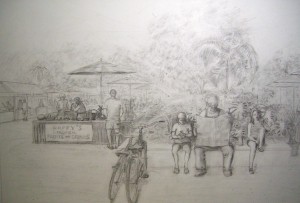
(Step 2) I decided to draw a full size drawing (16″x22″) of the scene in anticipation of creating a colorful watercolor.
(step 3) I have started the under painting of the watercolor, but I haven’t decided if this will be the finished painting, or only a practice one. It doesn’t matter to me, I’ve been known to paint several color sketches as well as two or three paintings until I’m satisfied with them. I like some of the things I’m seeing so far, and some things I do not. I may be able to lift out what I do not like…we’ll see.
